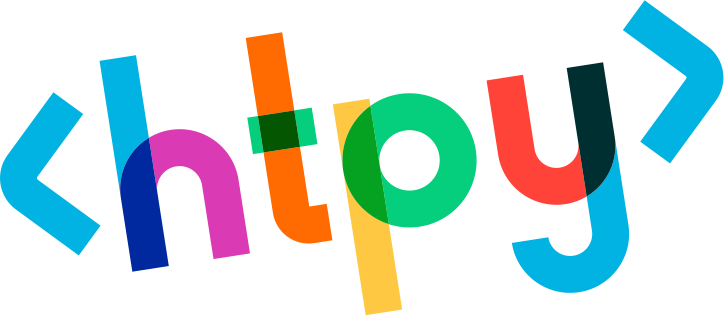htpy - HTML in Python
Project description

htpy - HTML in Python
htpy is a library that makes writing HTML in plain Python fun and efficient, without a template language.
Define HTML in Python:
from htpy import body, h1, head, html, li, title, ul
menu = ["egg+bacon", "bacon+spam", "eggs+spam"]
print(
html[
head[title["Todays menu"]],
body[
h1["Menu"],
ul(".menu")[(li[item] for item in menu)],
],
]
)
And get HTML:
<!DOCTYPE html>
<html>
<head>
<title>Todays menu</title>
</head>
<body>
<h1>Menu</h1>
<ul class="menu">
<li>egg+bacon</li>
<li>bacon+spam</li>
<li>eggs+spam</li>
</ul>
</body>
</html>
Motivation for this project
At Personalkollen, where htpy was originally developed we often found ourselves hitting walls when using classic templates. htpy was created to improve the productiveness and experience of generating HTML from a Python backend.
Key features
-
Leverage static types: Use mypy or pyright to type check your code.
-
Great debugging: Avoid cryptic stack traces from templates. Use your favorite Python debugger.
-
Easy to extend: There is no special way to define template tags/filters. Just call regular functions.
-
Works with existing Python web framework: Works great with Django, Flask or any other Python web framework!
-
Works great with htmx: htpy makes for a great experience when writing server rendered partials/components.
-
Create reusable components: Define components, snippets, complex layouts/pages as regular Python variables or functions.
-
Familiar concepts from React: React helped make it popular writing HTML with a programming language. htpy uses a lot of similar constructs.
Philosophy
htpy generates HTML elements and attributes and provide a few helpers.
htpy does not enforce any particular pattern or style to organize your pages, components and layouts. That does not mean that htpy cannot be used to build sophisticated web pages or applications.
Rather the opposite: you are encouraged the leverage the power of Python to structure your project. Use modules, classes, functions, decorators, list comprehension, generators, conditionals, static typing and any other feature of Python to organize your components. This gives you a lot of power and makes htpy scale from a single small Flask project to bigger applications.
Common patterns can give you some ideas that you can build upon yourself.
Installation
htpy is available on PyPI. You may install the latest version using pip:
pip install htpy
Documentation
The full documentation is available at https://htpy.dev:
Project details
Release history Release notifications | RSS feed
Download files
Download the file for your platform. If you're not sure which to choose, learn more about installing packages.











